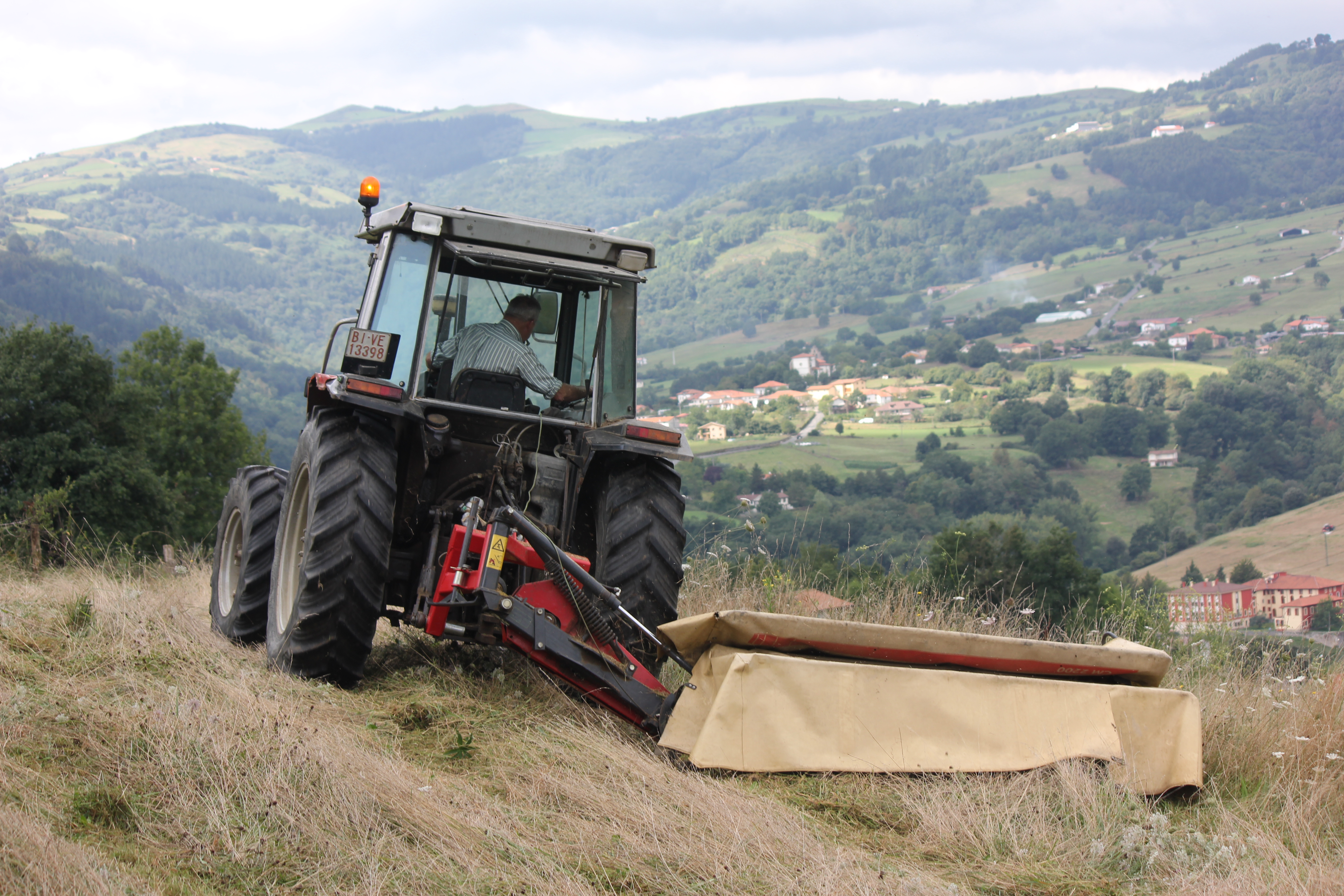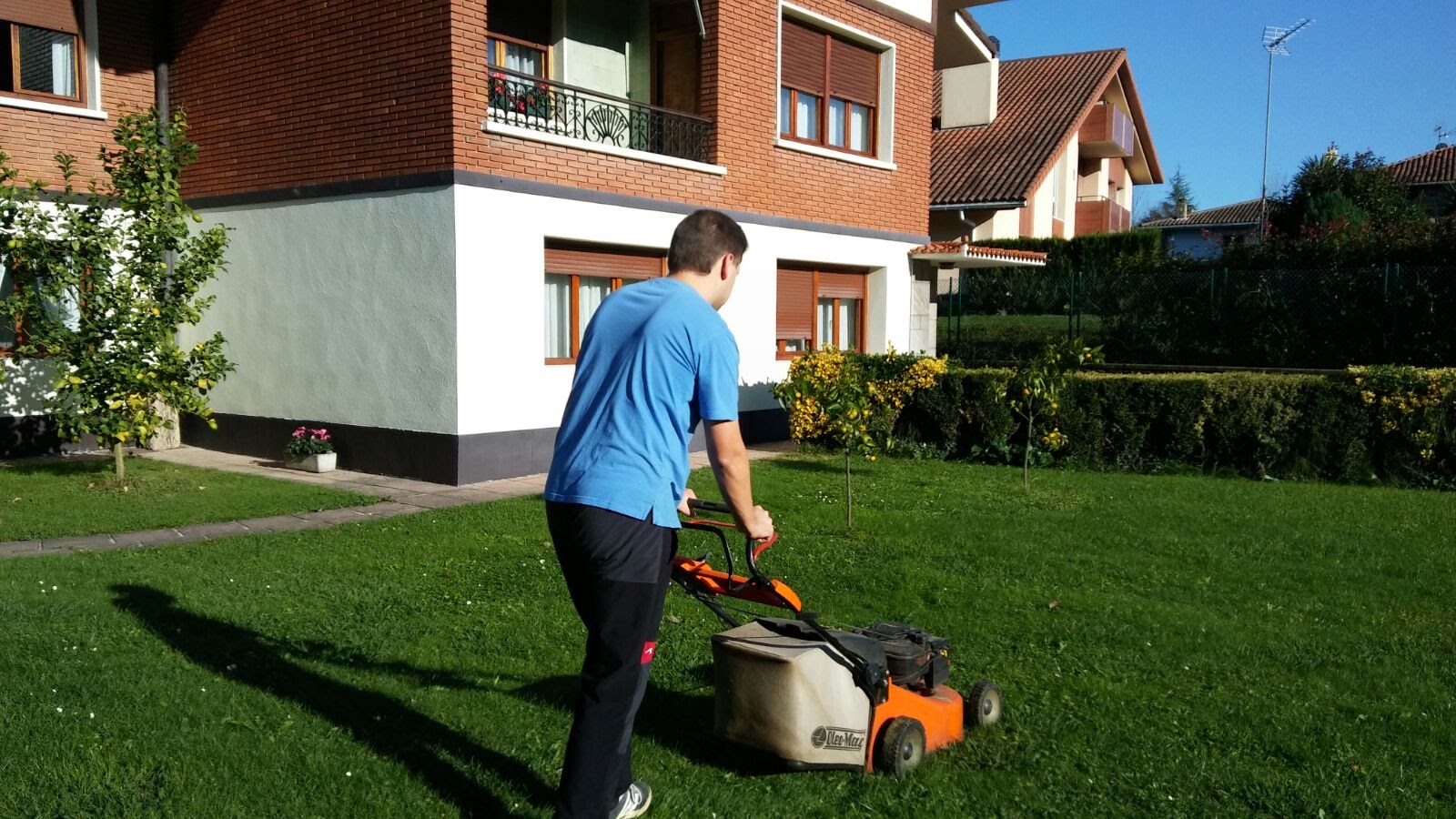Basque ethnography at a glance

Grass harvesting in Carranza (Bizkaia), 2017. Luis Manuel Peña. Labayru Fundazioa Photographic Archive.
The eighth volume of the Ethnographic Atlas of the Basque Country, this one dedicated to agriculture, is about to see the light of day. It relates to a previous volume on livestock farming and shepherding, as could not be otherwise, since agriculture in traditional societies is closely linked to these activities. The present work includes a chapter devoted to grass, where the mentioned linkage is perhaps most clearly appreciated, its cultivation and care being designed for the provision of animal feed.
Other than its major purpose, grass holds other interests. Coinciding with the real estate boom prior to the current crisis, more and more people born and bred in the city moved to the countryside, and increasing flows of rural migrants returned to their home villages. Customary as it was for new houses to be surrounded by a garden, a significant difference is observed as regards grass management by livestock farmers and newcomers. The cut grass is, of course, what really matters to the former at harvest time, because it constitutes the staple food for their animals; the latter, on the contrary, seem mostly concerned about keeping their lawns trimmed, to the point getting rid of grass cuttings is often thought to be a nuisance.

Mowing the lawn of a garden in Lezama (Bizkaia), 2017. Maider Aurrekoetxea. Labayru Fundazioa Photographic Archive.
As livestock intensification gradually gains ground, there has been notable tendency towards convergence of late. In order to have a lush, green lawn, former city dwellers reseed their yards with graminaceous plants especially selected for the purpose. Farmers, in turn, achieve maximum performance by displacing the enormous biodiversity of traditional meadows with one or very few highly productive grasses. Combine this with an aversion to living hedges and woods, and the result is a uniform landscape of green grasslands that so reminds us of the look of the lawns urbanites yearn for. Due to the monoculture of grass, spring flowers do no longer grow in meadows today, and their functions have been reduced to the minimum expression, serving as a source of food for bees and other insects among them.
The groundbreaking book Silent spring by the American biologist Rachel Carson springs to mind, a benchmark publication released in the mid-20th century denouncing the harmful consequences of the generalized use of pesticides on the environment and its devastating effect on bird populations, whose chirping is silenced, hence the title of the book. I look at the land around me, bewildered at the vast tracts of meadows with nothing growing except grass and fear a spring with no flowers.
Luis Manuel Peña – Ethnography Department – Labayru Fundazioa
Translated by Jaione Bilbao – Language Department – Labayru Fundazioa
References for further information: Agriculture and Livestock Farming and Shepherding, both part of the Ethnographic Atlas of the Basque Country collection.

